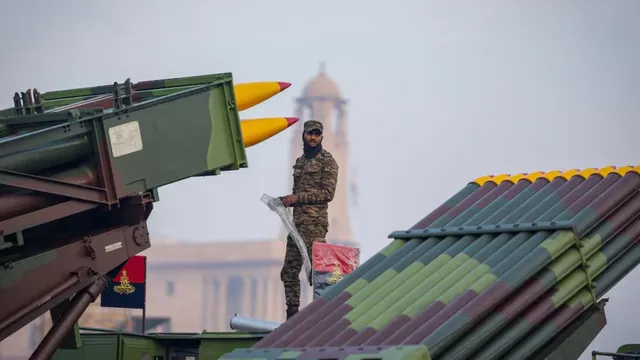- By Supratik Das
- Mon, 12 May 2025 08:52 PM (IST)
- Source:JND
In a brief yet powerful address to the nation, Prime Minister Narendra Modi hailed the success of Operation Sindoor, emphasising the unprecedented role played by Made-in-India weapons in neutralising terror threats across Pakistan and Pakistan-occupied Kashmir (PoK).
Launched in response to the Pahalgam terror attack on April 22, which left 26 people dead, Operation Sindoor involved “precise” and “calibrated” strikes on nine terror hubs, reportedly run by Pakistan-based outfits. The Prime Minister described the operation as a stern warning to the enemies of India, “Every terrorist and every terror organisation now knows the price of trying to wipe the sindoor from the foreheads of our daughters.”
"Indigenous Weapons Proving Power in Modern Battlefields"
The Prime Minister’s address came nearly four days after the execution of 'Operation Sindoor'. He said, “India's strike was measured, precise, and built on the strength of our own innovations.” “Made In India weapons are defending the nation, they are setting global benchmarks in new age warfare,” he added.
Made in India Weapons Setting Global Benchmark
Several homegrown systems formed the backbone of the Indian military’s success in several couter terrorism operations. Here’s a look at the Make-in-India weaponry that played a critical role in 'Operation Sindoor':
1. Tejas Light Combat Aircraft
Deployed for air patrol and reconnaissance missions during the operation. Tejas has earned global recognition and is being considered for export to several countries. It delivers on ease of flight with a quadruplex digital FBW system that stabilises the aircraft during complex manoeuvres. It has proved to be better than its Soviet-era predecessor, with a design optimised for agility and control.
2. Arjun Main Battle Tank
Used in border mobilisation, Arjun MBT is India’s indigenously developed third-generation battle tank, offering heavy firepower and mobility. Arjun MBT Mk IA is incorporated with versatile and improved features like track width mine plough, roof-mounted Driver’s seat, advanced land navigation system, and enhanced night vision capabilities. This tank is also incorporated with Explosive Reactive Armour for enhanced protection and a modified Final Drive for improved mobility.
3. Pinaka Multi-Barrel Rocket Launcher
Deployed for long-range precision strikes on terror launch pads across PoK. Its indigenous development and high-impact firepower make it a cornerstone of India’s artillery forces. The quick response and relatively high pointing accuracy of the Launcher enable it to deliver a large volume of fire against critical and time-sensitive enemy targets, within a very short time. The Launcher System is supported on four hydraulically actuated outriggers at the time of firing.
4. BrahMos Supersonic Cruise Missile
While co-developed with Russia, over 65 per cent of the BrahMos missile’s components are now made in India. It was used in targeted strikes, offering unmatched speed and accuracy. It is versatile, and its deployment can be on different platforms like ships, submarines, aircraft, and launchers on land. The BrahMos name has been derived from two rivers, the Brahmaputra of India and the Moskva of Russia.
5. D4 Anti-Drone System
An indigenously developed system designed to detect, jam, and neutralize enemy drones. It has emerged as a nightmare for Pakistan's drone incursions, particularly its Turkish-supplied unmanned aerial vehicles (UAVs). The D4 uses non-kinetic methods to detect, disrupt, and intercept enemy drones. The D4 system's success lies in its multi-layered approach, developed through the collaboration of four specialised DRDO laboratories.
6. Akash Missile System
This surface-to-air missile system, developed by DRDO, provided robust air defence by intercepting incoming Pakistani missiles and UAVs. Its rapid deployment along the western border proved crucial. The real-time multi-sensor data processing and threat evaluation enable simultaneous engagement of multiple targets from any direction. The entire system is flexible and up-scalable and can be operated in group and autonomous modes. It employs command guidance and relies on phased array guidance radar to guide the missile until intercept.
Also read: 'Pakistan Ko Jispar Bahut Ghamand Tha...': PM Modi On Destroying Airbase With Indian-Made Weapons

